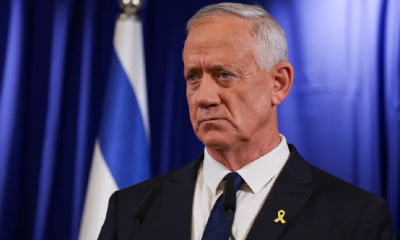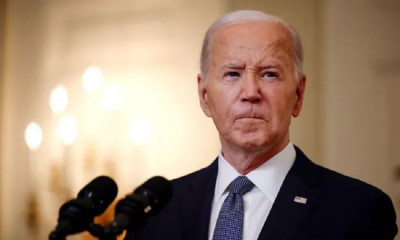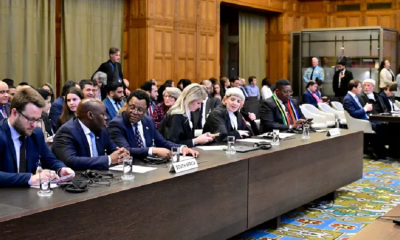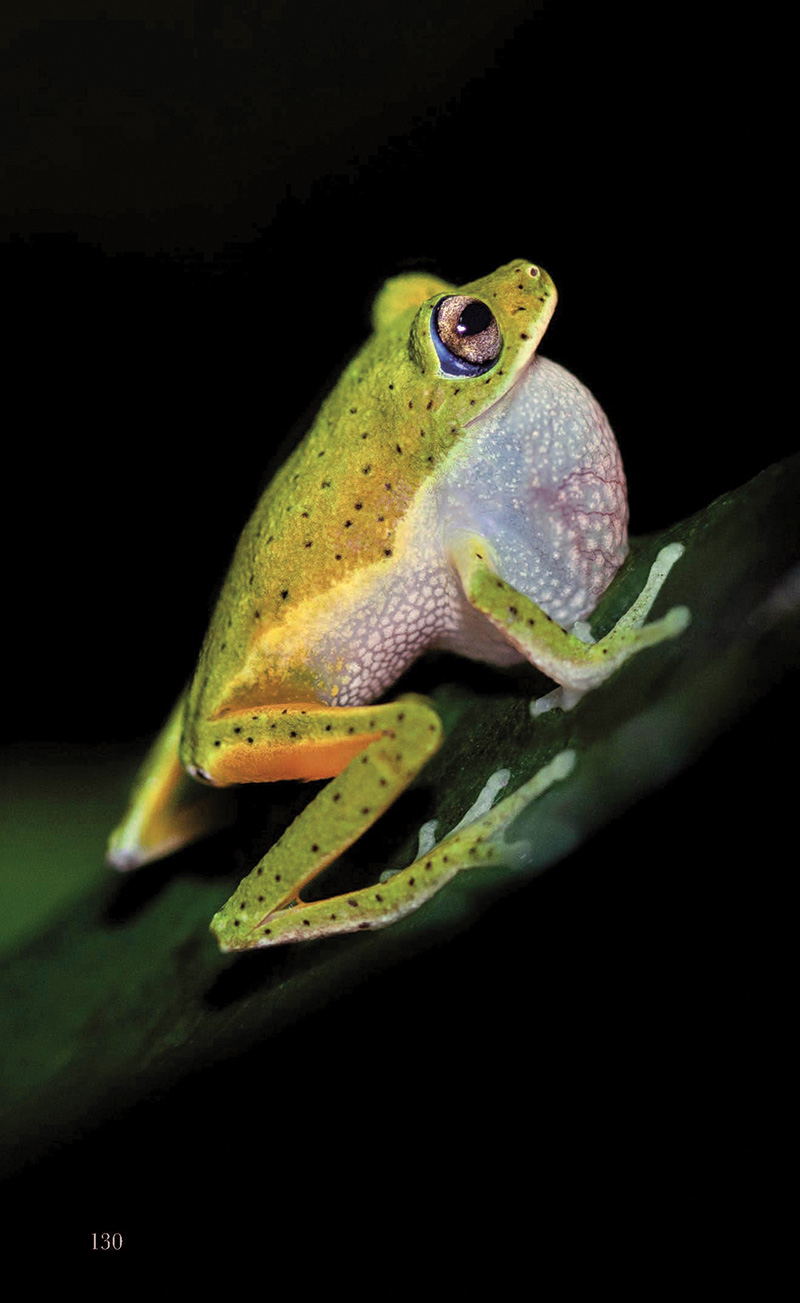Features
THE NEED FOR RESPONSIBLE MEDIA REPORTING
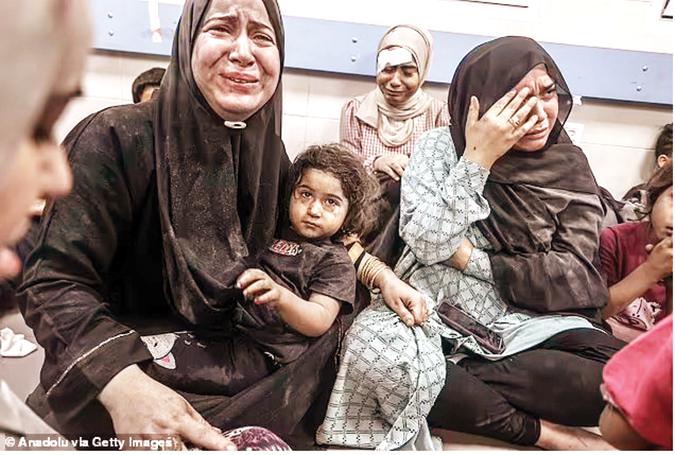
By Sanjeewa Jayaweera
The English cricketer Moeen Ali, who incidentally is also the vice-captain of the team, posted on his Instagram page a thought-provoking quote: “If you are not careful, the newspapers will have you hating the people who are being oppressed and loving the people who are doing the oppressing”. The quote is attributed to the American Muslim human rights activist Malcolm X.
The post obviously refers to media (TV and newspapers) reporting the ongoing conflagration between Israel and Hamas. Moeen initially posted the quote along with a Palestinian flag in an apparent show of support for Palestine. He later deleted the Palestinian flag and replaced it with a photo of Malcolm X.
Whether one agrees with Moeen or not, he needs to be lauded for having the courage to say publicly what he believed despite the negative response it would evoke in a non-Muslim country and particularly given his status as the vice-captain of the English team. It would be interesting to know whether the rest or a majority of his teammates who are not Muslim think along the same lines.
The BBC Refusing to refer to Hamas as Terrorists
The British Broadcasting Corporation (BBC) has also been heavily criticized for not describing Hamas militants as “terrorists” in coverage of the recent attacks in Israel. The UK Defence Secretary said the BBC policy is “verging on disgraceful”. The Defence Secretary said, “They are not freedom fighters, they are not militants, they are pure and simple terrorists, and it’s remarkable to go to the BBC website and still see them talking about gunmen and militants and not calling them terrorists.” Several other current and former UK politicians endorsed the views expressed by the Dence Secretary.
The BBC responded, “We always take our use of language very seriously.” The veteran BBC reporter John Simpson said, ” Calling someone a terrorist means you are taking sides and ceasing to treat the situation with due impartiality. He also said, “British politicians know perfectly well why the BBC avoids the word ‘terrorist’, and plenty of them have privately agreed with it over the years.
Many Sinhalese living in Sri Lanka as well as overseas have been very critical of the BBC and other overseas media channels for how they reported the civil conflict in Sri Lanka that spanned over 25 years. Most felt that their reporting was biased against the Sinhalese and the government. As to how many Sinhalese who now support Palestine would welcome the stance of the BBC would be interesting! The perception that the foreign media is biased was well illustrated recently when President Ranil Wickramasinghe lost his composure during an interview on Deutsche Welle, a German channel. He accused Western governments and media of hypocrisy in demanding an international investigation into the Easter Sunday bombings. He questioned whether they have investigated with foreign judges in their own countries.
Terrorists versus Freedom Fighters
The best all-encompassing definition of Terrorism I came across is “The calculated use of violence to create a general climate of fear in a population, thereby bringing about a particular political objective. Terrorism has been practiced by political organizations with both rightist and leftist objectives, by nationalistic and religious groups, by revolutionaries, and even by state institutions such as armies, intelligence services, and police.” (Brittanic).
A Freedom Fighter has been defined as ” a person who uses violent methods to try to remove a government from power. It is often said that one person’s freedom fighter is another person’s terrorist.” (Cambridge Dictionary). This is precisely what happened in Sri Lanka when, during the conflict, for nearly all Sinhalese, the LTTE were terrorists, and for most Tamils, they were freedom fighters.
Downside of taking sides based on media reports
As in the rest of the world, in Sri Lanka, too, particularly among many English-speaking Colombo folk with no previous interest or knowledge of the Middle East, the ongoing conflict between Israel and Hamas has caused strong opinions to be formed and expressed.
Most have done so based on videos and news reports aired over local and foreign TV channels. Certainly, atrocities that result in the murder of innocent civilians need to be deplored. Visuals and newspaper reports of young children and older adults being killed are repulsive and deserve our condemnation. There is no place for such atrocities in a civilized world.
However, the problem lies when those at the forefront of such condemnation do it selectively. It is certainly not the first time children and elders have been killed by indiscriminate bombing and shootings during raids in the Middle East, Sri Lanka, Ukraine or elsewhere by all parties involved in the conflict.
Based on media reports that are not balanced, it is quite natural and convenient to conclude who is right and wrong. This is precisely what Moeen was saying in his post. Whilst condemnation of atrocities against civilians is in order, there is a need to study and understand why there is an ongoing conflict, why it arose, and the reasons for the non-resolution.
The conflict between Israel and Palestine has been ongoing for several decades. This is where the media needs to play an important role in ensuring balanced reporting and highlighting the hypocrisy that prevails, particularly regarding civilian casualties during conflicts.
UN-mandated sanctions on Iraq and consequences on children
Famously, in an interview in 1996, Madeleine Albright, who was an American diplomat who also served as the US Secretary of State from 1997 to 2001, said when asked by Lesley Stahl, the interviewer, “We have heard that half a million children have died in Iraq due to the UN-mandated sanctions”. Her reply was, “a very hard choice, but we think the price is worth it”. It was a shocking admission by a senior government official of the callous attitude towards the lives of young children.
Albright later criticized Stahl’s segment as “amounting to Iraqi propaganda”, saying that hers was a loaded question. She wrote, “I had fallen into a trap and said something I did not mean”, and that she regretted coming “across as cold-blooded and cruel”. She apologized for her remarks in a 2020 interview with The New York Times, calling them “totally stupid”.
The figure of 500,000 has been subsequently challenged and disputed. Incidentally, Lesley Stahl’s interviewing skills have resulted in two other high-profile Presidents, Nicolas Sarkozy (French) and Donald Trump, walking out of the interviews, unable to withstand her probing questions.
Political ideologies clouding the issue
At times, political ideologies get in the way. For example, in my teens and early 20s, as a committed socialist and a student union activist, I was pro-Palestinian despite not having studied and understood the root cause of the conflict. It was natural for socialists to dominate trade unions, and the underdog was expected to be supported! Four decades later, I am no longer a socialist nor a supporter of trade unions and am somewhat ambivalent about the Palestinian issue.
Undoubtedly, the civil conflict that prevailed in Sri Lanka for nearly 25 years has taught me that these are complex issues and that determining who is right or wrong is a difficult task. During the conflict, many of us (Sinhalese and Tamils), while unhappy with civilian casualties, still believed they were a sad consequence of fighting a war.
Media Responsibility
The conflagration between Israel and Hamas has once again reinforced that media reporting goes a long way in forming public opinion. Most viewers and readers accept what is reported as the truth and form an opinion. In light of that, it is essential for the media, considered the fourth estate in a democracy, to be independent, impartial and balanced in reporting.
“Responsible reporting refers to the ethical practice of gathering, compiling, and presenting information to the public in an honest, accurate, and fair manner. It’s an approach to journalism and content creation that prioritizes truth, accountability, and the potential impact of content on the audience and society at large.”
In my view, in Sri Lanka, the reporting by most television channels that have the broadest reach is biased and certainly not conducive to religious and ethnic harmony in the country. None of the television channels can claim to be politically independent. There is no attempt made to give a balanced view on any controversial topic despite the tagline ” We Report You Decide”.
I fail to understand why television channels feel that they should broadcast speeches or voice cuts of politicians and religious persons that undoubtedly create racial and religious disharmony in our country. Are they unaware they provide these people a platform to propagate disharmony and that these are counterproductive to our nation?
It is also sad and depressing that those responsible for the country’s economic mismanagement are still given air time and are allowed to go unchallenged on our television channels.
As to why TV news should include visuals of politicians visiting places of religious worship is perplexing. As these visits should be considered strictly private, what is the purpose of allocating resources and airtime to broadcast them?
There is also a lack of investigative journalism in our newspapers and television. It is observed that whilst certain acts of corruption are highlighted, they are quickly forgotten, with the media and the public moving on to the next headline.
“One of the roles of the media is to act as a watchdog or gatekeeper of the public. For instance, in countries marred by corruption, nepotism and other vices from the government in power, the media holds the government accountable for its actions. The media will hence highlight and even investigate political issues that are of public interest and bring them into the public limelight.” (mediacentre.org)
Features
Cyclones, greed and philosophy for a new world order

Further to my earlier letter titled, “Psychology of Greed and Philosophy for a New World Order” (The Island 26.11.2025) it may not be far-fetched to say that the cause of the devastating cyclones that hit Sri Lanka and Indonesia last week could be traced back to human greed. Cyclones of this magnitude are said to be unusual in the equatorial region but, according to experts, the raised sea surface temperatures created the conditions for their occurrence. This is directly due to global warming which is caused by excessive emission of Greenhouse gases due to burning of fossil fuels and other activities. These activities cannot be brought under control as the rich, greedy Western powers do not want to abide by the terms and conditions agreed upon at the Paris Agreement of 2015, as was seen at the COP30 meeting in Brazil recently. Is there hope for third world countries? This is why the Global South must develop a New World Order. For this purpose, the proposed contentment/sufficiency philosophy based on morals like dhana, seela, bhavana, may provide the necessary foundation.
Further, such a philosophy need not be parochial and isolationist. It may not be necessary to adopt systems that existed in the past that suited the times but develop a system that would be practical and also pragmatic in the context of the modern world.
It must be reiterated that without controlling the force of collective greed the present destructive socioeconomic system cannot be changed. Hence the need for a philosophy that incorporates the means of controlling greed. Dhana, seela, bhavana may suit Sri Lanka and most of the East which, as mentioned in my earlier letter, share a similar philosophical heritage. The rest of the world also may have to adopt a contentment / sufficiency philosophy with strong and effective tenets that suit their culture, to bring under control the evil of greed. If not, there is no hope for the existence of the world. Global warming will destroy it with cyclones, forest fires, droughts, floods, crop failure and famine.
Leading economists had commented on the damaging effect of greed on the economy while philosophers, ancient as well as modern, had spoken about its degenerating influence on the inborn human morals. Ancient philosophers like Plato, Aristotle, and Epicurus all spoke about greed, viewing it as a destructive force that hindered a good life. They believed greed was rooted in personal immorality and prevented individuals from achieving true happiness by focusing on endless material accumulation rather than the limited wealth needed for natural needs.
Jeffry Sachs argues that greed is a destructive force that undermines social and environmental well-being, citing it as a major driver of climate change and economic inequality, referencing the ideas of Adam Smith, John Maynard Keynes, etc. Joseph Stiglitz, a Nobel Laureate economist, has criticised neoliberal ideology in similar terms.
In my earlier letter, I have discussed how contentment / sufficiency philosophy could effectively transform the socioeconomic system to one that prioritises collective well-being and sufficiency over rampant consumerism and greed, potentially leading to more sustainable economic models.
Obviously, these changes cannot be brought about without a change of attitude, morals and commitment of the rulers and the government. This cannot be achieved without a mass movement; people must realise the need for change. Such a movement would need leadership. In this regard a critical responsibility lies with the educated middle class. It is they who must give leadership to the movement that would have the goal of getting rid of the evil of excessive greed. It is they who must educate the entire nation about the need for these changes.
The middle class would be the vanguard of change. It is the middle class that has the capacity to bring about change. It is the middle class that perform as a vibrant component of the society for political stability. It is the group which supplies political philosophy, ideology, movements, guidance and leaders for the rest of the society. The poor, who are the majority, need the political wisdom and leadership of the middle class.
Further, the middle class is the font of culture, creativity, literature, art and music. Thinkers, writers, artistes, musicians are fostered by the middle class. Cultural activity of the middle class could pervade down to the poor groups and have an effect on their cultural development as well. Similarly, education of a country depends on how educated the middle class is. It is the responsibility of the middle class to provide education to the poor people.
Most importantly, the morals of a society are imbued in the middle class and it is they who foster them. As morals are crucial in the battle against greed, the middle class assume greater credentials to spearhead the movement against greed and bring in sustainable development and growth. Contentment sufficiency philosophy, based on morals, would form the strong foundation necessary for achieving the goal of a new world order. Thus, it is seen that the middle class is eminently suitable to be the vehicle that could adopt and disseminate a contentment/ sufficiency philosophy and lead the movement against the evil neo-liberal system that is destroying the world.
The Global South, which comprises the majority of the world’s poor, may have to realise, before it is too late, that it is they who are the most vulnerable to climate change though they may not be the greatest offenders who cause it. Yet, if they are to survive, they must get together and help each other to achieve self-sufficiency in the essential needs, like food, energy and medicine. Trade must not be via exploitative and weaponised currency but by means of a barter system, based on purchase power parity (PPP). The union of these countries could be an expansion of organisations,like BRICS, ASEAN, SCO, AU, etc., which already have the trade and financial arrangements though in a rudimentary state but with great potential, if only they could sort out their bilateral issues and work towards a Global South which is neither rich nor poor but sufficient, contented and safe, a lesson to the Global North. China, India and South Africa must play the lead role in this venture. They would need the support of a strong philosophy that has the capacity to fight the evil of greed, for they cannot achieve these goals if fettered by greed. The proposed contentment / sufficient philosophy would form a strong philosophical foundation for the Global South, to unite, fight greed and develop a new world order which, above all, will make it safe for life.
by Prof. N. A. de S. Amaratunga
PHD, DSc, DLITT
Features
SINHARAJA: The Living Cathedral of Sri Lanka’s Rainforest Heritage

When Senior biodiversity scientist Vimukthi Weeratunga speaks of Sinharaja, his voice carries the weight of four decades spent beneath its dripping emerald canopy. To him, Sri Lanka’s last great rainforest is not merely a protected area—it is “a cathedral of life,” a sanctuary where evolution whispers through every leaf, stream and shadow.
“Sinharaja is the largest and most precious tropical rainforest we have,” Weeratunga said.
“Sixty to seventy percent of the plants and animals found here exist nowhere else on Earth. This forest is the heart of endemic biodiversity in Sri Lanka.”
A Magnet for the World’s Naturalists
Sinharaja’s allure lies not in charismatic megafauna but in the world of the small and extraordinary—tiny, jewel-toned frogs; iridescent butterflies; shy serpents; and canopy birds whose songs drift like threads of silver through the mist.
“You must walk slowly in Sinharaja,” Weeratunga smiled.
“Its beauty reveals itself only to those who are patient and observant.”
For global travellers fascinated by natural history, Sinharaja remains a top draw. Nearly 90% of nature-focused visitors to Sri Lanka place Sinharaja at the top of their itinerary, generating a deep economic pulse for surrounding communities.
A Forest Etched in History
Centuries before conservationists championed its cause, Sinharaja captured the imagination of explorers and scholars. British and Dutch botanists, venturing into the island’s interior from the 17th century onward, mapped streams, documented rare orchids, and penned some of the earliest scientific records of Sri Lanka’s natural heritage.
These chronicles now form the backbone of our understanding of the island’s unique ecology.
The Great Forest War: Saving Sinharaja
But Sinharaja nearly vanished.
In the 1970s, the government—guided by a timber-driven development mindset—greenlit a Canadian-assisted logging project. Forests around Sinharaja fell first; then, the chainsaws approached the ancient core.
“There was very little scientific data to counter the felling,” Weeratunga recalled.
- Poppie’s shrub frog
- Endemic Scimitar babblers
- Blue Magpie
“But people knew instinctively this was a national treasure.”
The public responded with one of the greatest environmental uprisings in Sri Lankan history. Conservation icons Thilo Hoffmann and Neluwe Gunananda Thera led a national movement. After seven tense years, the new government of 1977 halted the project.
What followed was a scientific renaissance. Leading researchers—including Prof. Savithri Gunathilake and Prof. Nimal Gunathilaka, Prof. Sarath Kottagama, and others—descended into the depths of Sinharaja, documenting every possible facet of its biodiversity.
“Those studies paved the way for Sinharaja to become Sri Lanka’s very first natural World Heritage Site,” Weeratunga noted proudly.
- Vimukthi
- Nadika
- Janaka
A Book Woven From 30 Years of Field Wisdom
For Weeratunga, Sinharaja is more than academic terrain—it is home. Since joining the Forest Department in 1985 as a young researcher, he has trekked, photographed, documented and celebrated its secrets.
Now, decades later, he joins Dr. Thilak Jayaratne, the late Dr. Janaka Gallangoda, and Nadika Hapuarachchi in producing, what he calls, the most comprehensive book ever written on Sinharaja.
“This will be the first major publication on Sinharaja since the early 1980s,” he said.
“It covers ecology, history, flora, fauna—and includes rare photographs taken over nearly 30 years.”
Some images were captured after weeks of waiting. Others after years—like the mysterious mass-flowering episodes where clusters of forest giants bloom in synchrony, or the delicate jewels of the understory: tiny jumping spiders, elusive amphibians, and canopy dwellers glimpsed only once in a lifetime.
The book even includes underwater photography from Sinharaja’s crystal-clear streams—worlds unseen by most visitors.
A Tribute to a Departed Friend
Halfway through the project, tragedy struck: co-author Dr. Janaka Gallangoda passed away.
“We stopped the project for a while,” Weeratunga said quietly.
“But Dr. Thilak Jayaratne reminded us that Janaka lived for this forest. So we completed the book in his memory. One of our authors now watches over Sinharaja from above.”
An Invitation to the Public
A special exhibition, showcasing highlights from the book, will be held on 13–14 December, 2025, in Colombo.
“We cannot show Sinharaja in one gallery,” he laughed.
“But we can show a single drop of its beauty—enough to spark curiosity.”
A Forest That Must Endure
What makes the book special, he emphasises, is its accessibility.
“We wrote it in simple, clear language—no heavy jargon—so that everyone can understand why Sinharaja is irreplaceable,” Weeratunga said.
“If people know its value, they will protect it.”
To him, Sinharaja is more than a rainforest.
It is Sri Lanka’s living heritage.
A sanctuary of evolution.
A sacred, breathing cathedral that must endure for generations to come.
By Ifham Nizam
Features
How Knuckles was sold out

Leaked RTI Files Reveal Conflicting Approvals, Missing Assessments, and Silent Officials
“This Was Not Mismanagement — It Was a Structured Failure”— CEJ’s Dilena Pathragoda
An investigation, backed by newly released Right to Information (RTI) files, exposes a troubling sequence of events in which multiple state agencies appear to have enabled — or quietly tolerated — unauthorised road construction inside the Knuckles Conservation Forest, a UNESCO World Heritage site.
At the centre of the unfolding scandal is a trail of contradictory letters, unexplained delays, unsigned inspection reports, and sudden reversals by key government offices.
“What these documents show is not confusion or oversight. It is a structured failure,” said Dilena Pathragoda, Executive Director of the Centre for Environmental Justice (CEJ), who has been analysing the leaked records.
“Officials knew the legal requirements. They ignored them. They knew the ecological risks. They dismissed them. The evidence points to a deliberate weakening of safeguards meant to protect one of Sri Lanka’s most fragile ecosystems.”
A Paper Trail of Contradictions
RTI disclosures obtained by activists reveal:
Approvals issued before mandatory field inspections were carried out
Three departments claiming they “did not authorise” the same section of the road
A suspiciously backdated letter clearing a segment already under construction
Internal memos flagging “missing evaluation data” that were never addressed
“No-objection” notes do not hold any legal weight for work inside protected areas, experts say.
One senior officer’s signature appears on two letters with opposing conclusions, sent just three weeks apart — a discrepancy that has raised serious questions within the conservation community.
“This is the kind of documentation that usually surfaces only after damage is done,” Pathragoda said. “It shows a chain of administrative behaviour designed to delay scrutiny until the bulldozers moved in.”
The Silence of the Agencies
Perhaps, more alarming is the behaviour of the regulatory bodies.
Multiple departments — including those legally mandated to halt unauthorised work — acknowledged concerns in internal exchanges but issued no public warnings, took no enforcement action, and allowed machinery to continue operating.
“That silence is the real red flag,” Pathragoda noted.
“Silence is rarely accidental in cases like this. Silence protects someone.”
On the Ground: Damage Already Visible
Independent field teams report:
Fresh erosion scars on steep slopes
Sediment-laden water in downstream streams
Disturbed buffer zones
Workers claiming that they were instructed to “complete the section quickly”
Satellite images from the past two months show accelerated clearing around the contested route.
Environmental experts warn that once the hydrology of the Knuckles slopes is altered, the consequences could be irreversible.
CEJ: “Name Every Official Involved”
CEJ is preparing a formal complaint demanding a multi-agency investigation.
Pathragoda insists that responsibility must be traced along the entire chain — from field officers to approving authorities.
“Every signature, every omission, every backdated approval must be examined,” she said.
“If laws were violated, then prosecutions must follow. Not warnings. Not transfers. Prosecutions.”
A Scandal Still Unfolding
More RTI documents are expected to come out next week, including internal audits and communication logs that could deepen the crisis for several agencies.
As the paper trail widens, one thing is increasingly clear: what happened in Knuckles is not an isolated act — it is an institutional failure, executed quietly, and revealed only because citizens insisted on answers.
by Ifham Nizam
-
News5 days ago
Lunuwila tragedy not caused by those videoing Bell 212: SLAF
-

 News4 days ago
News4 days agoLevel III landslide early warning continue to be in force in the districts of Kandy, Kegalle, Kurunegala and Matale
-

 Latest News6 days ago
Latest News6 days agoLevel III landslide early warnings issued to the districts of Badulla, Kandy, Kegalle, Kurunegala, Matale and Nuwara-Eliya
-

 Features6 days ago
Features6 days agoDitwah: An unusual cyclone
-

 Latest News7 days ago
Latest News7 days agoUpdated Payment Instructions for Disaster Relief Contributions
-

 Business2 days ago
Business2 days agoLOLC Finance Factoring powers business growth
-

 News2 days ago
News2 days agoCPC delegation meets JVP for talks on disaster response
-

 News2 days ago
News2 days agoA 6th Year Accolade: The Eternal Opulence of My Fair Lady


